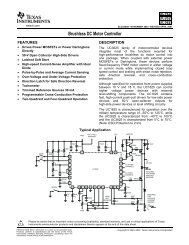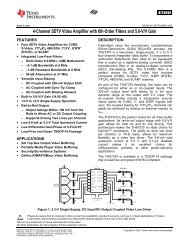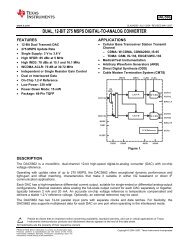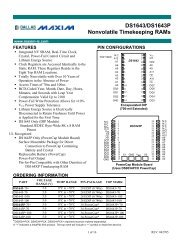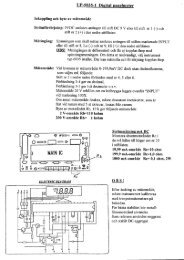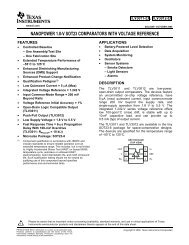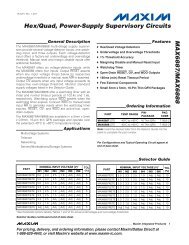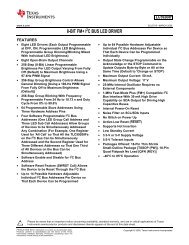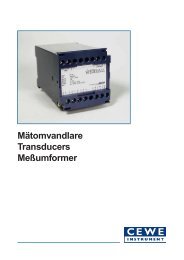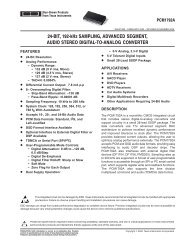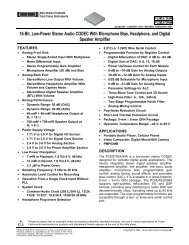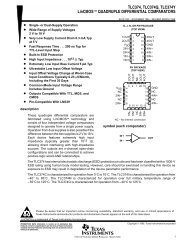Single-Chip Low Power RF Transceiver for Narrowband Systems ...
Single-Chip Low Power RF Transceiver for Narrowband Systems ...
Single-Chip Low Power RF Transceiver for Narrowband Systems ...
Create successful ePaper yourself
Turn your PDF publications into a flip-book with our unique Google optimized e-Paper software.
Parameter<br />
Spurious emission, radiated CW<br />
47-74, 87.5-118,<br />
174-230, 470-862 MHz<br />
9 kHz – 1 GHz<br />
1 – 4 GHz<br />
Optimum load impedance<br />
433 MHz<br />
868 MHz<br />
915 MHz<br />
CC1021<br />
Min Typ Max Unit Condition / Note<br />
54 + j44<br />
15 + j24<br />
20 + j35<br />
-54<br />
-36<br />
-30<br />
dBm<br />
dBm<br />
dBm<br />
Table 3. <strong>RF</strong> transmit parameters<br />
Ω<br />
Ω<br />
Ω<br />
At maximum output power,<br />
+10/+5 dBm at 433/868 MHz.<br />
To comply with EN 300 220,<br />
FCC CFR47 part 15 and ARIB<br />
STD T-67 an external (antenna)<br />
filter, as implemented in the<br />
application circuit in Figure 25,<br />
must be used and tailored to<br />
each individual design to reduce<br />
out-of-band spurious emission<br />
levels.<br />
Spurious emissions can be<br />
measured as EIRP values<br />
according to EN 300 220. The<br />
antenna (SMAFF-433 and<br />
SMAFF-868 from R.W. Badland)<br />
plays a part in attenuating the<br />
spurious emissions.<br />
If the output power is increased<br />
using an external PA, a filter must<br />
be used to attenuate spurs below<br />
862 MHz when operating in the<br />
868 MHz frequency band in<br />
Europe. Application Note AN036<br />
CC1020/1021 Spurious Emission<br />
presents and discusses a solution<br />
that reduces the TX mode<br />
spurious emission close to 862<br />
MHz by increasing the REF_DIV<br />
from 1 to 7.<br />
Transmit mode. For matching<br />
details see section 14 on page<br />
46.<br />
SWRS045B Page 7 of 89



